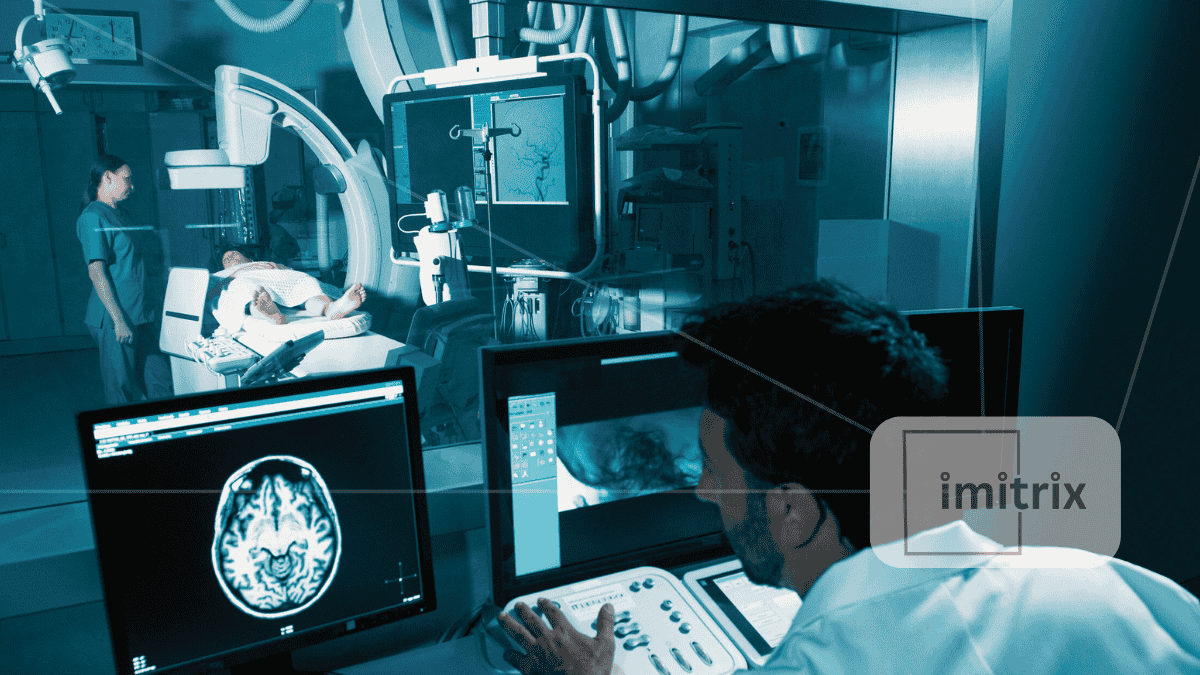The “future of diagnostics” is unfolding rapidly, driven by breakthroughs in artificial intelligence (AI). Across the healthcare sector, AI is transforming healthcare from reactive treatment to proactive prevention. One of the most promising areas is early disease detection, where AI tools are showing unmatched potential to change patient outcomes.
The Current State of Diagnostics
Traditional diagnostic methods often rely on human expertise, manual interpretation of tests, and sometimes invasive procedures. While medical professionals perform critical work, the process can be slow, costly, and prone to human error. Misdiagnosis rates in areas like cancer and neurological disorders remain concerningly high. Delays in diagnosis can mean missed treatment windows, especially for conditions where early intervention is crucial.
The “future of diagnostics” is set to address these challenges, making detection faster, more precise, and broadly accessible.
How AI is Transforming Healthcare Diagnostics
AI can process vast amounts of data faster and more precisely than humans. It identifies patterns in imaging, lab results, and genetic information that even experienced specialists might overlook. This capability is central to how AI is transforming healthcare diagnostics.
1. Medical Imaging
AI algorithms now match or surpass radiologists in identifying early signs of diseases like lung cancer, breast cancer, and diabetic retinopathy. Machine learning models trained on extensive image datasets can detect subtle anomalies invisible to the human eye. Tools such as Google Health’s mammogram AI are setting new benchmarks in diagnostic accuracy.
2. Predictive Analytics
AI’s strength lies not just in diagnosing existing conditions but in predicting future risks. By analyzing electronic health records (EHRs), wearable device data, and even social determinants of health, AI systems can anticipate disease onset well before symptoms emerge. This predictive ability is especially vital in chronic illnesses like heart disease, diabetes, and neurodegenerative conditions.
3. Pathology and Genomics
AI is redefining pathology by digitizing and analyzing biopsy samples with unprecedented speed and accuracy. Deep learning models can distinguish between benign and malignant tissues more reliably than traditional methods. Similarly, AI in genomics helps pinpoint genetic mutations linked to inherited diseases, enabling faster and more targeted treatments.
Real-World Applications Leading the Future of Diagnostics
Several projects and technologies already illustrate how the future of diagnostics is materializing:
- IDx-DR: This FDA-cleared AI system autonomously detects diabetic retinopathy, bringing eye screening to primary care settings.
- PathAI: PathAI supports pathologists with AI-driven tools that enhance diagnostic precision and reduce variability.
- Tempus: Tempus merges AI, clinical records, and molecular data to aid personalized treatment planning, notably in oncology.
- Babylon Health: This platform uses AI to assess symptoms and recommend next steps, expanding healthcare access.
These advances demonstrate that AI is not replacing doctors but empowering them to make faster, more informed decisions, transforming healthcare at every level.
Challenges and Ethical Considerations
While the “future of diagnostics” holds promise, it also raises important concerns:
- Data Privacy: Managing sensitive patient information requires strict cybersecurity protocols and transparent data usage policies.
- Bias and Inequality: AI systems must be trained on diverse datasets to avoid reinforcing health disparities among underrepresented populations.
- Trust and Transparency: Patients and clinicians must understand and trust AI-driven insights. Building explainable AI systems is critical.
- Regulatory Compliance: Healthcare AI must meet rigorous standards to ensure patient safety, and regulatory bodies are still evolving their frameworks.
- Clinical Validation: AI tools must undergo extensive clinical trials to verify efficacy across different patient demographics and conditions.
The Economic Impact of AI in Diagnostics
The economic benefits of the “future of diagnostics” are substantial. Early detection can prevent the progression of disease, reducing the need for costly, late-stage treatments and hospitalizations. Hospitals and clinics adopting AI diagnostic tools report improvements in workflow efficiency, patient satisfaction, and operational costs.
Moreover, AI-driven diagnostics have the potential to democratize healthcare access. In regions with shortages of specialists, AI tools can fill critical gaps, delivering high-quality diagnostic services to underserved communities.
Future Trends Shaping the Future of Diagnostics
Looking ahead, several trends are poised to define the future of diagnostics:
- Integration with Wearable Technology: Wearables like smartwatches will evolve into real-time diagnostic devices, continuously monitoring vital signs and flagging early warning signs.
- Home-Based Testing: AI-powered home diagnostic kits will allow patients to perform blood tests, genetic screenings, and more without visiting a clinic.
- Personalized Diagnostics: Combining genomic, proteomic, and lifestyle data, AI will tailor diagnostic approaches to each individual’s biological profile.
- Global Disease Surveillance: AI will enable faster detection of emerging public health threats, enhancing global pandemic preparedness.
- Continuous Learning Systems: AI models will continuously improve with new data inputs, broadening their diagnostic capabilities over time.
The Human Side of AI in Diagnostics
Despite the excitement around AI, human clinicians remain irreplaceable. The “future of diagnostics” will not sideline doctors but enhance their abilities. AI can process information at scale, but human judgment, empathy, and experience are essential in interpreting results, communicating with patients, and making complex care decisions.
Building strong partnerships between AI technologies and healthcare providers is key to realizing AI’s full potential. Training clinicians to work alongside AI tools will be crucial for future success.
Conclusion: A Healthier Tomorrow
The “future of diagnostics” is rapidly becoming a reality, offering a future where diseases are detected earlier, treatment is more targeted, and healthcare is more accessible and efficient. By transforming healthcare with AI-driven solutions, we move closer to a world where medicine is not just reactive but genuinely proactive.
Early detection saves lives. With AI at the forefront, the healthcare system is poised for a major evolution that puts patients first. By responsibly addressing challenges around ethics, trust, and equality, the “future of diagnostics” can deliver on its full promise—better health outcomes for everyone.
The future of diagnostics is not just about better technology; it’s about building a smarter, healthier world.

